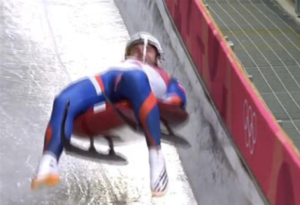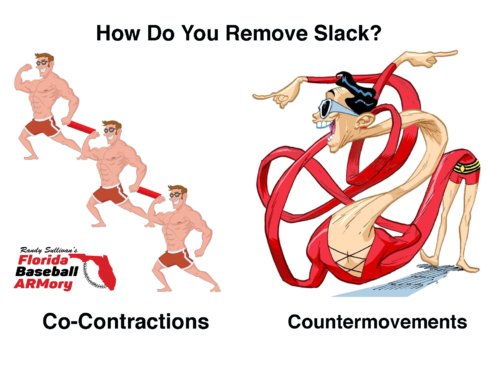
The External vs. Internal Focus Debate In Baseball Skill Acquisition
I heard a lot of talk among coaches at the ABCA Convention in Dallas last month about motor learning and skill acquisition science.
That’s a good thing.
It’s refreshing to see so many coaches and MLB teams expanding their horizons and pushing toward a more “science-based, data-driven” approach to enhance both in-game performance and player development.
When I played, we all wanted to work hard; however, knowing what to work on was always a problem. I can  remember going into my mother’s back yard and hitting her elm tree with a wooden bat. I got really good at hitting elm trees with wood bats. For today’s players, the challenge is different. This generation also wants to work hard, but with the explosion in technology we’ve seen lately, knowing what to work on is no longer the issue. How to get gains in the quickest manner possible. That’s where motor skill acquisition science comes into play.
remember going into my mother’s back yard and hitting her elm tree with a wooden bat. I got really good at hitting elm trees with wood bats. For today’s players, the challenge is different. This generation also wants to work hard, but with the explosion in technology we’ve seen lately, knowing what to work on is no longer the issue. How to get gains in the quickest manner possible. That’s where motor skill acquisition science comes into play.
The big debate at the ABCA was focused around three main points:
Explicit vs. implicit learning
External vs. internal focus
Feedback types (KP vs. KR)
Skill acquisition scientists have separated teaching and learning of motor skills into two basic types, explicit (linear) and implicit (non-linear).
In explicit learning, the instructor or coach drives the athlete toward the performance of an “ideal model” using a cognitive approach that cues the athlete to focus his attention internally on what his body parts are doing and how he feels.
Implicit learning, on the other hand, is less cognitive and the athlete is encouraged to focus his attention externally on the goal of an activity. Instead of directing the athlete toward an ideal mechanical model, the instructor or coach is more of a designer or the architect of a training experience. An architect designs a plaza with walkways and breezeways that encourage the traffic to follow a preferable route, rather than running through the bushes. Similarly, an implicit (non-linear) teacher use techniques like Constraints-Led Approach (CLA), differential learning or freezing and releasing degrees of freedom to encourage the athlete to self-organize movement solutions.
Both explicit and implicit learning demand feedback to enhance the learning experience. Researchers have divided feedback into 2 basic categories: Knowledge of Performance (KP) and Knowledge of Results (KR). KP is subjective and makes statements about the quality or “look” of a movement. A coach or instructor offering KP says things like, “That swing looked good.” or “Your hands broke too late.”
Knowledge of Results (KR) is objective. It makes no value judgment as to the quality of a movement, it only concerns itself with the results of the movement. Augmented, or extrinsic KR includes information like radar gun readings, Rapsodo® reports, and target hits or misses. “Wulf (2007) and others have shown that an external focus (i.e., attending to the effects of the movement) is more beneficial in the learning and retention of a skill than an internal focus (i.e., attending to the movement itself).”
However, nearly all researchers agree that the most optimal feedback is known as intrinsic Knowledge of Results. In intrinsic KR, the athlete finds self-organized internal biomarkers that guide his movement. These biomarkers represent a subconscious or semi-conscious feel the athlete experiences which reinforces the performance of his movement. Chow et al. describe intrinsic KR as “information received by the athlete as a direct result of producing a movement through the kinesthetic senses – e.g., feeling from muscles, joints, and balance.”
I think of intrinsic KR as a series of internal navigational beacons or checkpoints that an athlete progresses  through during his movement. For example, a pitcher who taps his glove once after breaking his hands might be hitting an internal checkpoint that tells him everything is on course. After he taps his hands, he might shift to another internal cue such as feeling his foot rotate into the ground.
through during his movement. For example, a pitcher who taps his glove once after breaking his hands might be hitting an internal checkpoint that tells him everything is on course. After he taps his hands, he might shift to another internal cue such as feeling his foot rotate into the ground.
In arguing against implicit learning and external focus, some coaches and instructors have pointed to experiential observations that many high-performing athletes appear to have a clear understanding of where their body is and what its parts are doing at any time during the movement. Highly skilled athletes seem to focus internally on these checkpoints. This apparent internal focus among high-level athletes would fly in the face of research suggesting external focus as a superior teaching/learning approach.
However, something happened a few weeks ago as I sat down to enjoy the Super Bowl that compelled me to think more critically and to wonder if the external and internal focus debaters aren’t, in truth, saying and seeing mostly the same thing.
What happened?
I watched Gladys Knight sing the National Anthem.
Her riveting performance was breathtaking, inspirational, and a complete nightmare for gamblers everywhere. Apparently, you can bet on the length of the Super Bowl national anthem. I did not know that. The over/under for this year’s national anthem was 1:50 — the “ending” was to set to be whenever the singer dropped the last word, “Brave.” Gladys finished at 1:49 barely nailing the under, but then she took a breath and repeated the last word, a move that sent gambling institutions frenetically scrambling to reach a ruling as to who should be paid out, the over or the under.
The controversy hearkened me back to the 2011 Super Bowl when Cristina Aguilera famously botched her rendition of The Star-Spangled Banner.
Most people couldn’t imagine how a professional singer of Aguilera’s caliber could make such an embarrassing error, but I knew precisely how it happened.
Back in my early 20s, I had two disparately different jobs. I was a nuclear missile launch officer (let that sink in for a minute — if you know me it’ll scare the heck out of you).
I was also the lead singer in a rock and roll band.
We were all missile officers, and we played in local bars and pool halls all over Colorado, Nebraska, and Wyoming. We also played parties at the Officer’s and NCO clubs at various military bases in Las Vegas, South Dakota, Montana, and California. The name of our band was “The Warble Tones,” because that’s name of the siren you hear just before receiving orders to launch your nuclear weapons. As you might imagine, missile officers are on a strict zero tolerance drug policy. The tests were allegedly “random”, but since the guys in the band were drug tested just about every week, we titled our first album, “Submitted for Your Analysis.”
One thing I learned when singing on stage is that even when you know the lyrics to a song like the back our your hand, you have to think forward continually. You have to recall and prepare for the next line in the song while you’re singing the one you’re on right now. Where you get into trouble is when you hit a lick or go on a vocal riff and mentally stop to admire your work. If you aren’t disciplined in continually looking forward, “Wow! I nailed that part.” can quickly turn into “O heck. Where was I? What’s the next line?” and before you know it, you’re trying to catch up to your mental markers, and the song gets away from you.
It occurred to me that singing on stage is akin to performing a movement with intrinsic KR. When coaches point out that high-level performers are more attuned to internal “feel” cues, they are really talking about intrinsic KR. It would appear that some of the best performers in the world are indeed internally focused on their bodies. However, when you consider an internal cue in the context of time, you realize that an elite performer must be able to hit his cues or markers consistently, but he must also be continually reaching forward toward the next checkpoint. This idea makes the singing parallel even more vivid in my mind.
In essence, within the context of time, a player focused internally on his personal movement beacons could actually be, at any given moment, externally focused on his next internal marker. If he concentrates too much on the proprioceptive feel of his current position, he may be late in transitioning to the next beacon. He might then be forced to rush his movement in an attempt to catch up to his next cue. As he progresses through the movement, his timing disruption could cause each attractor to become more and more unstable. Eventually, the movement could become uncontrollable and erode completely.
In the pitching movement, this could produce wide swings in velocity and/or command, but, more importantly, the failure to spend just the right amount of time on one marker before moving to the next could lead to an  injury. As the athlete continues to mistime his internal “feel” markers, events could cascade into a situation in which key muscles do not reach optimal length-tension relationships and thus fail to co-contract at precisely the right time. In this case, muscle slack would not be adequately removed, so motor control and joint stability would not be possible. Lack of motor control could allow the forces to be focused on inert tissue (e.g., UCL, labrum), which are ill-equipped to handle the stresses that should have been attenuated by the dynamic structures. The tissue would fail, and the athlete would be injured.
injury. As the athlete continues to mistime his internal “feel” markers, events could cascade into a situation in which key muscles do not reach optimal length-tension relationships and thus fail to co-contract at precisely the right time. In this case, muscle slack would not be adequately removed, so motor control and joint stability would not be possible. Lack of motor control could allow the forces to be focused on inert tissue (e.g., UCL, labrum), which are ill-equipped to handle the stresses that should have been attenuated by the dynamic structures. The tissue would fail, and the athlete would be injured.
Consider this hypothetical example:
For more on our Dynamical Systems View of Pitching Mechanics CLICK HERE
Let’s say a feeling a pitcher gets when he achieves co-contraction on his back leg is his initial checkpoint. He  hits it, but instead of moving forward to his next feel cue he focuses his attention on the quality of that initial connection. He stays on his back leg a little longer than usual so rather than achieving foot plant from above, he slides into the landing of his lead leg. This precludes him from achieving co-contraction on his lead leg. Meanwhile, he fails to notice that the natural feel of his arm swing is off and he has missed an internal marker there as well. The attractor landscape becomes unstable, and fluctuations abound as he tries desperately to right the ship. However, since he has relied so heavily on finding his “feel” in his training, he is unaccustomed to deploying fluctuations to manage error adjustment. Ultimately, the entire system becomes unstable, and he careens off into wildness, loss of velocity and/or tissue failure. He might survive it and regroup for the next pitch, or he might become the classic one-off injury victim.
hits it, but instead of moving forward to his next feel cue he focuses his attention on the quality of that initial connection. He stays on his back leg a little longer than usual so rather than achieving foot plant from above, he slides into the landing of his lead leg. This precludes him from achieving co-contraction on his lead leg. Meanwhile, he fails to notice that the natural feel of his arm swing is off and he has missed an internal marker there as well. The attractor landscape becomes unstable, and fluctuations abound as he tries desperately to right the ship. However, since he has relied so heavily on finding his “feel” in his training, he is unaccustomed to deploying fluctuations to manage error adjustment. Ultimately, the entire system becomes unstable, and he careens off into wildness, loss of velocity and/or tissue failure. He might survive it and regroup for the next pitch, or he might become the classic one-off injury victim.
The bottom line:
Intrinsic KR can be a valuable feedback strategy for minimizing the bandwidth of deviations in hitting and throwing movement patterns. However, it requires an experienced player who is well in-tune with the internal cues (feelings) created by the movement. Even though intrinsic KR is usually considered an internal focus technique, when reviewed in the context of time, internally focused athletes might actually be externally focused as they move forward from beacon to beacon. Additionally, athletes should be wary of relying too heavily on intrinsic KR, because the moment they miss the timing of one marker, the entire pattern could erode. In my mind, this concept provides even more evidence for the necessity of variability in training, even among highly-performing athletes who are supremely in tune with their bodies. Without variability in practice, the athlete could develop a rigid, unadjustable pattern that fails to provide strategies for dealing with an ever-changing perceptual landscape.
Get started by calling, our CFO/COO Amy, at 866-787-4533.
We’ll see you at The ARMory
References:
- Renshaw I, Davids K, Savelsbergh GJP, Motor Learning In Practice: A Constraints-Led Approach, Routledge Taylor and Friends Group, London and New York, 2010
- Chow JY, Davids K, Button C, Renshaw I, Non-linear Pedagogy In Skill Acquisition: An Introduction, Routledge, New York, NY. 2016

Randy Sullivan, MPT, CSCS CEO, Florida Baseball ARMory







